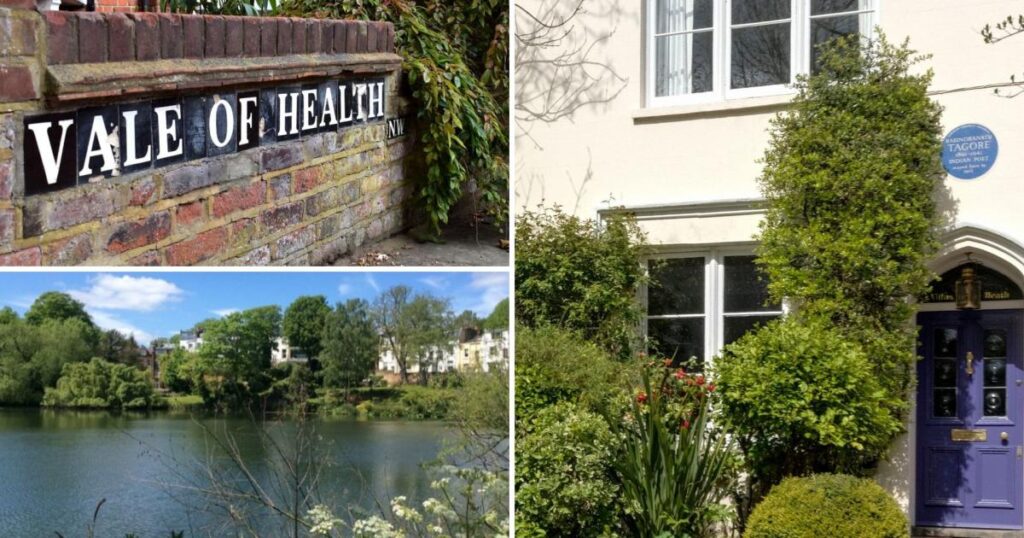The Vale of Health is a single road that forks into two prongs – leading to an idyllic hamlet of just 60 properties surrounded by the Heath.
Those unaware of the tiny enclave, said to be one of the most isolated communities in London, might think the sign should read the Vale of Heath.
The area was originally a marshy settlement called Hatchett’s Bottom – fed by the springs on Hampstead Heath – and is one of the sources of the river Fleet.
Thomas Barratt’s images of The Vale of Health from Hampstead Heath.(Image: Archant)
Ironically it was quite unhealthy but is thought to have been renamed in 1801 as a rebranding exercise by the Hampstead Water Company who drained the land in 1777 to create a reservoir to supply the city of London.
They wanted to attract developers and residents and it clearly worked – by 1816 Leigh Hunt had moved into a cottage and for the next three years his home became a literary hub for fellow Romantic poets John Keats and Percy Shelley, and essayist William Hazlitt.
The literary connection continued in the 20th century as this small settlement is blessed with two English Heritage blue plaques to – Lady Chatterly’s Lover novelist D.H. Lawrence who lived there in 1915, and Nobel laureate Rabindranath Tagore.
During this three months staying at Villas on the Heath in 1912, The Bengali poet, essayist and campaigner wrote his best known work, Gitanjali (Song Offerings).
Stella Gibbons the author of Cold Comfort Farm was also a resident in Vale Cottage which served as a setting for some of her novels, including the semi-autobiographical Enbury Heath.
Other notable residents included newspaper founder and editor Alfred Harmsworth, Lord Northcliffe.
In the late 19th Century The Vale of Health began to attract Londoners who left the grime of the city on weekends and holidays to find fresh air and entertainment.
A hotel was built in 1863 with bars, food and a veranda overlooking the pond while the area behind it was used as a fairground.
On Bank holidays the Ham&High reported, up to 80,000 Cockneys would descend on the Heath in trams, trains and buses to enjoy the fair, donkey rides, circus acts, refreshments and “an exhibition of curiosities.”
An article in The Era magazine in 1909 reads: “In the Vale of Health: Harry Cox, the local showman, proudly boasts that he never exhibits his show concerns away from the Heath. By the side of the Vale Waters you will find him ready to entertain you. Here you will see steam roundabouts, boats, swings, shooters and variety stalls. Harry Cox, Vale of Health Perpetual Pleasure Fair is the great central constellation around which many lesser lights live and shine”.
The hotel was converted into flats and artists studios – Stanley Spencer painted there from 1914 to 1927.
It was demolished in 1963 and replaced with flats.
The crowds moved on to other attractions in London – leaving the peaceful Vale of Health to the Heath joggers and the birds who gather around the pond.




